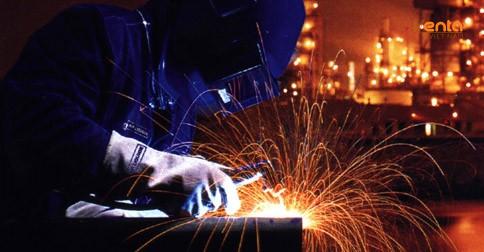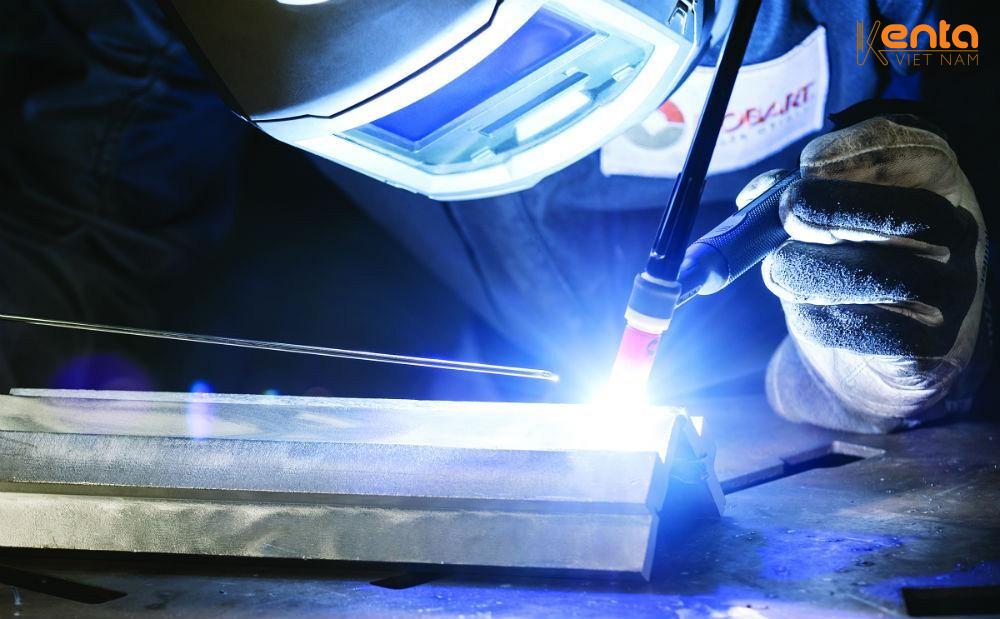Knowledge, Technology
Should backing plates be used for aluminum welding?
In welding techniques, especially when welding long seams or thin metal sheets, the issue is not only how to make the weld beautiful but also strong, free of porosity, and slag inclusion. For aluminum—a “difficult” material—the requirements are even higher. Therefore, many ask: should backing plates be used for aluminum welding?
What is a backing plate and its role in aluminum welding
A backing plate is a material placed behind the weld, at the bottom side of the welding groove. Its purpose is to support the weld during melting, help stabilize the arc, reduce burn-through, and keep the backside of the weld bead cleaner. This is a supportive technique often applied when welding TIG or MIG, especially with thin materials or when ensuring airtight welds is necessary.
For aluminum—which has high thermal conductivity and is prone to burn-through if the temperature exceeds the threshold—the backing plate can play an important role. It helps the welder better control the weld path, avoiding burn-through or gaps, thereby making aluminum welding easier and more stable.
How is aluminum welding different from welding iron or stainless steel?
Aluminum is a lightweight, shiny material that oxidizes easily and conducts heat 3–4 times better than steel. When starting aluminum welding, the welder faces rapidly dissipating heat, which can cause the arc to be unfocused, weld bead to be shallow, or insufficient penetration.

Additionally, the aluminum oxide layer on the surface has a higher melting point than pure aluminum, making it harder to maintain a stable arc. If heat input is not controlled properly, the weld is prone to porosity, slag inclusions, or deformation.
For these reasons, having a backing layer to “support” the weld can help significantly during aluminum welding—especially when working with thin sheets, aluminum tubes, or welding at difficult-to-access angles.
Is a backing plate always necessary for aluminum welding?
The answer is not always, but in some specific cases, using backing clearly brings benefits.
If you are welding aluminum thinner than 3mm, or welding a root weld that must be completely airtight (such as tanks, pipes, radiators…), then using a backing plate is advisable. It helps achieve a more uniform weld, prevents burn-through, and makes quality control easier—especially when TIG welding at low current.
Conversely, if you are welding thick aluminum sheets (5mm or more), or can access both sides of the weld, then using backing is not strictly required. In such cases, the welder can adjust the arc and welding parameters to control the weld well without additional support plates.
What materials are used as backing for aluminum welding?
Typically, backing is made from materials that do not stick when in contact with molten metal. For aluminum, the two most common backing types are:
Copper backing: This is an effective backing type because copper has good thermal conductivity, does not stick to aluminum, and helps distribute heat evenly. Using copper backing reduces burn-through, stabilizes the arc, and also results in a smooth backside weld surface without much need for reworking.
Heat-resistant ceramic backing: This is a popular choice when welding aluminum pipes, sealed welds, or in difficult-to-access positions. Ceramic does not conduct heat as well as copper but tolerates high temperatures and does not stick to the arc, making it suitable for applications requiring high thermal durability.
Some units also use stainless steel, steel, or other heat-resistant materials as backing, but for aluminum, these are less favored due to the risk of arc sticking or insufficient heat dissipation.
When not to use backing plates for aluminum welding
Although backing plates have many benefits, their use should not be mechanical. If the welder is experienced, working with advanced equipment like pulsed TIG welding machines, or welding structures that allow access from both sides, backing plates can be skipped to speed up and make the process more flexible.

Additionally, when working in the field or at positions without a flat surface behind the weld, placing a backing plate may not be feasible. At those times,The "freehand" welding technique combined with controlling the current and torch travel speed will be more important.
What impact does backing have on the aesthetics and durability of the weld?
In many cases, the backside of the weld is overlooked. But if you are welding parts like aluminum frames, doors, railings, or equipment housings, where both sides are visible, the weld root needs to look as good as the top side.
At this point, the backing plate plays a clear role: it helps create a round, even weld root without burning through or spilling over. Thanks to this, welders save on grinding and polishing after welding – meaning reduced processing costs and shorter project timelines.
However, to achieve this effect, the backing must be of the right type, clean, and firmly installed. If the backing shifts, is oily or dirty, or has bent edges, it will cause opposite errors – unstable arcs, distorted welds, or contamination.
Aluminum welding should be accompanied by quality materials
Not only the backing plate but everything involved in aluminum welding – from welding wire, shielding gas, aluminum sheets to equipment – plays a decisive role in weld quality.

At Kenta VietNam, we offer a full range of high-quality aluminum welding wires (ER4043, ER5356), industrial standard aluminum sheets (5052, 5083, 6061), and supporting accessories such as copper backing plates, heat-resistant ceramics… suitable for each practical application.
With a technical team knowledgeable about TIG, MIG welding, and factory improvement solutions, Kenta is always ready to advise customers on the best approaches to save time, materials, and ensure welds are strong and attractive.




















